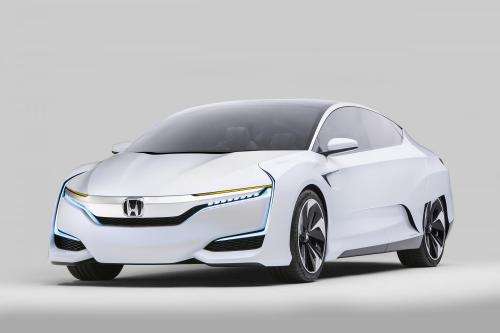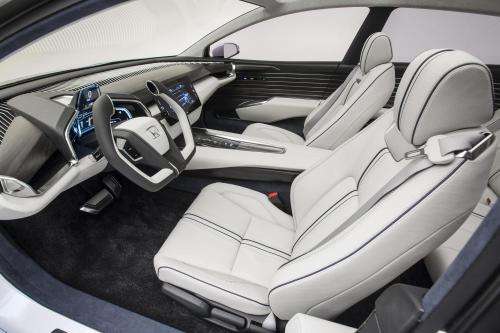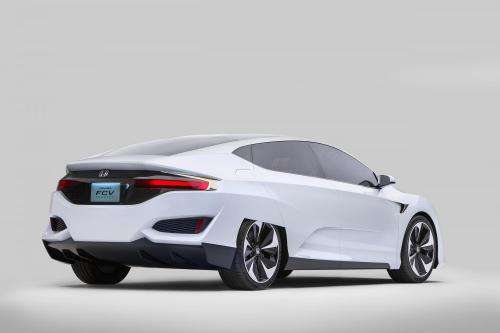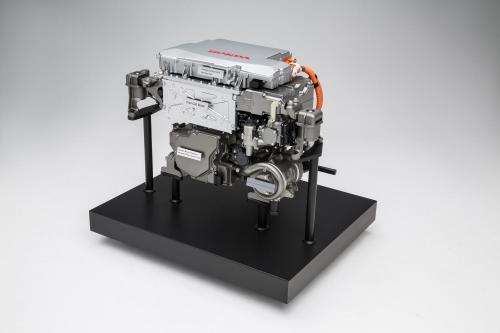Honda has taken full opportunity of the timing of the 2015 North American International Auto Show in Detroit this month to announce up and coming launches. The announcements also strengthen its rep as a car company on board with a resolve toward transport vehicles using alternative fuels. By 2018, expect an electric vehicle and also a plug-in hybrid model. The company plans further application of its two- and three-motor hybrid systems in the years to come. Also, the company said there will be new four-cylinder VTEC Turbo engines by the end of this year.
Close to the here and now, the key attraction from Honda at the show was its North American debut of the Honda FCV (stands for "fuel cell vehicle") Concept. This is Honda's next fuel-cell vehicle, with seating for five, and with driving range estimated in excess of 300 miles. The anticipated refueling time is approximately three minutes at a pressure of 70 MPa. The FCV Concept tells observers what Honda has in store for its fuel cell vehicle to be introduced next year. It is to launch in the U.S. following its March 2016 introduction in Japan.
Marc Carter, writing in Inhabitat, pointed out that unlike a few other car makers announcing new fuel cell vehicles, Honda has actually already offered a fuel cell vehicle to the public, the FCX Clarity. "The newest fuel cell vehicle will take off from where the FCX Clarity left off," he said. For example, the fuel cell stack is 33 percent smaller with a 60 percent increase in power density compared to the outgoing Honda FCX Clarity—freeing up space. The car's styling drew numerous comments. The Honda FCV Concept features a low, wide aerodynamic body and "it does have presence in person," said an article in Jalopnik, adding that it does look "much roomier" than previous Honda hydrogen fuel cell vehicles. Carter similarly commented that, "Compared to the FCX Clarity, the FCV Concept's exterior is even more futuristic looking with a low and wide body that looks like it came straight from the latest sci-fi movie."
Honda was one of the first companies to put fuel cell cars out there, said Brian Cooley, editor at large for CNET, in a video made while he was viewing the FCV Concept debut. Cooley said in the bigger picture, "The key to what these companies are trying to do, Honda in particular, is to push hydrogen fuel cell as the most normal alternative to the gasoline car, without range anxiety, or weird packaging issues."
In November, it was announced that, as a means to support the wider introduction of fuel-cell vehicles, Honda will provide $13.8 million in financial assistance to FirstElement Fuel to build additional hydrogen refueling stations around California.
The Los Angeles Times reported last month that, to date, there were only 11 hydrogen fueling stations in California, though, said the article" that number could increase to 40 stations within a year."
More information: — www.prnewswire.com/news-releas … debut-300019643.html
© 2015 Tech Xplore


























